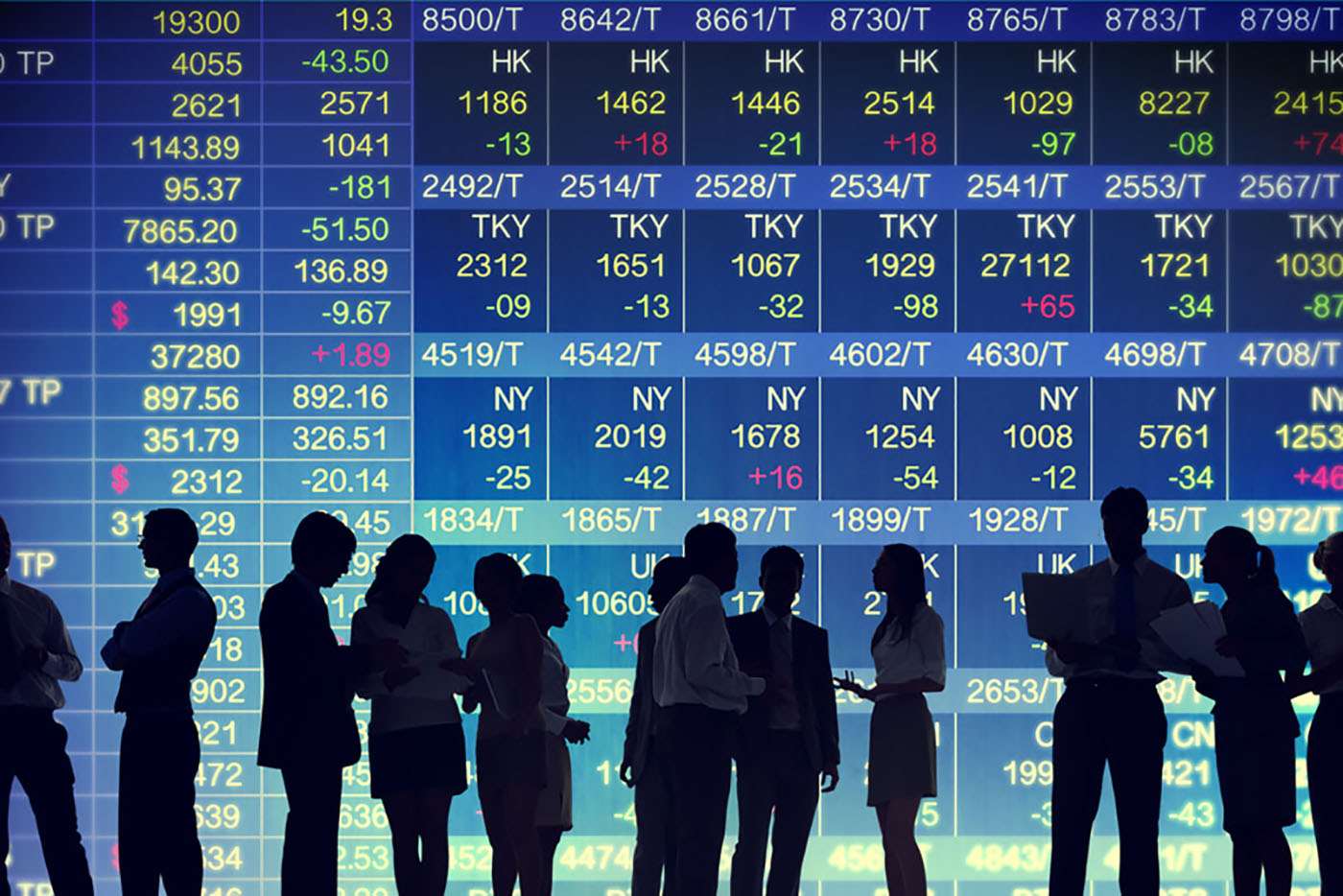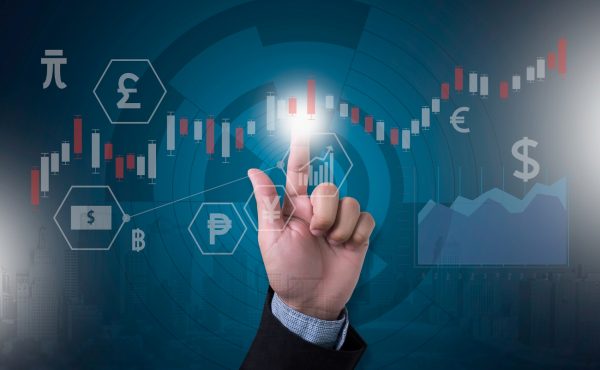Prime Rate Definition
Contents:

The rate is also used to adjust the rates charged on adjustable rate mortgages, credit card debt, home equity loans, and student loans. The prime rate is also important if you have any debt with a variable interest rate, where the bank can change your rate. This includes credit cards as well as variable rate mortgages, home equity loans, personal loans and variable rate student loans.

Such circumstances may affect the large corporations’ abilities to pay off existing debt, which, in turn, places downward pressure on their credit scores and ultimately results in hikes in the prime rate. A change in the prime rate often means that the Federal Reserve has changed its fund rate. For example, an increase to the federal funds rate may be to fight growing inflation and control price growth. The prime rate is reserved for only the most qualified customers, those who pose the least amount of default risk. Prime rates may not be available to individual borrowers but are offered to larger entities, such as corporations and stable businesses. If the prime rate is set at 5%, a lender still may offer rates below 5% to well-qualified customers which are not considered a mandatory minimum.
Secondary MarketMonday, February 27, 2023
It is typically extended only to those clients with the highest credit ratings – for example, corporations and other large institutions – given the lower risks that these customers appear to present. The interest rate charged on such loans by a central bank is called the discount rate, base rate, or repo rate, and is separate and distinct from the prime rate. Many credit cards with variable interest rates have their rate specified as the prime rate plus a fixed value commonly called the spread. Since individual consumers do not have the same resources, banks typically charge them the prime rate plus a surcharge based on the product type they want. A credit card rate might be the prime rate plus 10%, for instance.
A variable-rate instrument, such as many consumer mortgages, will reflect the standard rate for deferred payment set by the central bank prime rate, increasing it by some fixed percentage. As of February 2, 2023, the current prime rate is 7.75% in the U.S., according to The Wall Street Journal’s Money Rates table. This source aggregates the most common prime rates charged throughout the U.S. and in other countries. But the prime rate is only one factor among several that determine how much you’ll pay for loans. Banks also take into account your creditworthiness—the more likely you are to pay them back, the lower the rate they would charge and vice versa. If a borrower has an ARM that is tied to the prime rate, an increase in the prime rate may lead to an increase in the interest rate on the mortgage, resulting in higher monthly payments for the borrower.
Over the next few decades, the prime rate fluctuated widely, reflecting the ups and downs of the economy and largely mirroring other benchmark interest rates. During times of economic growth, the prime rate tends to be higher, while it tends to be lower during times of recession or financial turmoil. Whether you’re shopping for a new credit card or looking for ways to lower your interest on an existing card, understanding rates and how changes can impact you is a great start. At the end of the day, it can help you be a smarter consumer with better control of your credit. Your minimum payment includes interest charges, which are based on your APR. If your APR is affected by a change to the prime rate, your minimum payment may also change.
The prime rate is generally the lowest rate of interest in which money may be borrowed commercially. Here at ESL, we use the prime rate as a basis to calculate the Annual Percentage Rate on variable rate products including Home Equity Lines of Credit, Credit Cards, and variable rate Business Loans. ESL uses the prime rate as provided in the Eastern print edition of the Wall Street Journal. These creditworthy customers are often large corporations that borrow from commercial banks to finance their operations with debt. Financial InstitutionFinancial institutions refer to those organizations which provide business services and products related to financial or monetary transactions to their clients.
CreditCards.com does not include the entire universe of available financial or credit offers. As it is a major influencer for mortgage and personal loan rates, it is one of the biggest market indicators. Banks are able to charge a lower interest rate – the prime rate – to larger corporations as there is significantly less chance of them defaulting on a bank loan than an individual. When prime rate changes , your credit card APR also fluctuates. The change follows the same pattern as the prime rate — meaning a decrease in the prime rate results in a decrease in your card’s APR. The exact change in your interest rate depends on how much the prime rate changes — take for instance, the two recent adjustments that resulted in .50% and 1% APR reductions.
While you may not be able to secure the https://traderoom.info/ for yourself, you can still secure a favorable mortgage rate, especially if you have a high credit score (700+) and strong history of making timely payments. By being mindful of your credit score and debt-to-income ratio , you can ultimately secure lower interest rates and more loan options. The higher or lower the prime rate tends to go, the more likely it is that the cost of credit card or adjustable-rate mortgage payments will go up or down as well. Should the prime rate decrease by a large enough amount, you may also wish to consider refinancing your mortgage or renegotiating credit cards to obtain better interest rates and pay less out of pocket as well. While the prime rate can adjust any time, it tends to majorly shift only when a benchmark – for example, the federal funds rate – is adjusted.
H.15 Selected Interest Rates
In the United States, the prime rate runs approximately 300 basis points above the federal funds rate, which is the interest rate that banks charge each other for overnight loans made to fulfill reserve funding requirements. The Federal funds rate plus a much smaller increment is frequently used for lending to the most creditworthy borrowers, as is LIBOR, the London Interbank Offered Rate. The Federal Open Market Committee meets eight times per year to set a target for the federal funds rate. Debt with a variable interest rate can be affected by the prime rate because a bank can change your rate. This includes credit cards as well as variable rate mortgages, home equity loans, personal loans, and variable interest rate student loans.
That means that when the Fed raises interest rates, the prime rate also goes up. The prime rate, as reported by The Wall Street Journal’s bank survey, is among the most widely used benchmark in setting home equity lines of credit and credit card rates. It is in turn based on the federal funds rate, which is set by the Federal Reserve. The COFI is a widely used benchmark for adjustable-rate mortgages. Prime Ratemeans, at any time, the rate of interest per annum publicly announced from time to time by the Administrative Agent as its prime rate.
- While the interest rate on most financial products is dependent on the prime rate, the actual rate you receive is rarely the same exact amount.
- The prime rate is the interest rate that most commercial banks use to set the APR on credit cards.
- The Fed meets roughly eight times a year to discuss potential adjustments to the federal funds rate, based on the economy’s current conditions.
- Rather, the actual interest rate that you’ll be asked to pay will likely be above the prime rate as determined by your financial lender.
The Prime Ratemeans the publicly quoted lowest rate of interest from time to time at which The Standard Bank of South Africa Limited lends on unsecured overdraft to its most favoured South African Corporate customers. The prime rate is usually the lowest prevailing interest rate; if it rises, rates available to consumers will soon rise. The adjustment is based on the highest prime rate listed in the Wall Street Journal during the previous 90 days.
How we approach editorial content
The prime rate is the interest rate banks charge their best customers for loans. The prime rate is one of the main factors banks use to determine interest rates on loans. If a small business has a loan with an interest rate based on the prime rate, an increase in the prime rate may lead to an increase in the interest rate on the loan, resulting in higher loan payments for the business. If you’re wondering whether prime rate changes impact your credit account, the first step is to check your monthly statement.
For instance, the https://forexdelta.net/ announced two emergency rate cutsin March to help combat the negative economic impact of the coronavirus. These rate cuts resulted in a decrease in the federal funds rate, which in change lowered the prime rate and the interest rate for many consumer financial products. The prime rate is not fixed and can change over time based on changes in the federal funds rate, inflation, the demand for loans, and other economic factors.
Changes to the prime rate may impact things like your minimum payment and interest rate. Although this rate is generally given only to the largest corporations with excellent credit scores, it also affects the interest rate imposed on the average person. Therefore, any changes made to this rate would directly affect every other interest rate. This WSJ prime rate is usually 3 percent higher than the federal fund’s target rate. EDITORIAL DISCLOSURE All reviews are prepared by CreditCards.com staff. Opinions expressed therein are solely those of the reviewer and have not been reviewed or approved by any advertiser.

Rate posted by a majority of top 25 insured U.S.-chartered commercial banks. Prime is one of several base rates used by banks to price short-term business loans. You don’t need to monitor the WSJ Prime Rate every day, but depending on your financial goals, you might want to pay attention to the prime rate and its recent trends. If you want to pay off credit card debt, you should be aware of what interest rate you’re paying on that debt. If you have some cash savings in the bank, you might want to look for a higher-yielding savings account. The overall “cost of money” and your costs of borrowing are affected by the prime rate.
Prime rate history for 2006
Raises interest rates and vice versa signifying they are directly correlated. You should consider whether you understand how CFDs work and whether you can afford to take the high risk of losing your money. CFDs are complex instruments and come with a high risk of losing money rapidly due to leverage. We earn a commission from affiliate partners on many offers and links. Read more about Select on CNBC and on NBC News, and click here to read our full advertiser disclosure. Create a Rocket Account to check your credit and learn how to improve your score.
https://forexhero.info/ banks charge on short-term loans to their most creditworthy customers. While the prime rate affects the interest rate lenders set for financial products, you can still influence the rate you receive by improving your credit score. The higher your credit score, the better interest rates you’ll receive on existing accounts with variable rates, as well as new account openings. Malayan Banking Bhd has set a group-wide base rate at 3.2%, effective Jan 2, 2015.
Prime rate history for 2001
ESL uses a widely accepted index, The Wall Street Journal, to determine our prime rate. The Wall Street Journalis the most common source for the Prime Rate index and publishes its rate based on what the top 30 banks in the U.S. list as their prime rate. You can find the current prime rate on the Wall Street Journalwebsite. If the prime rate goes up, that means that banks are charging higher interest rates, and so the interest rates on your credit card or adjustable rate mortgage might go up too, making it more expensive to borrow. Another reason why the prime rate matters is because consumers’ borrowing costs are affected by their credit ratings.
Best HELOC rates for February 2023 – SFGATE
Best HELOC rates for February 2023.
Posted: Tue, 21 Feb 2023 15:28:03 GMT [source]
The WSJ Prime Rate is affected by the federal funds rate and is an indicator of the overall cost of money for banks and lenders, and of the overall functioning of financial markets. The WSJ Prime Rate is essentially the base interest rate that banks are charging borrowers, and it’s referenced by lenders and borrowers alike. It’s published each day by the Wall Street Journal, and it is an important method for people to keep track of the interest rates that banks are charging for loans and credit lines. These rates affect every single entity and level of an economy. They can affect the interest rate on mortgages, credit cards, and many other financial products.